Year in review: 2018
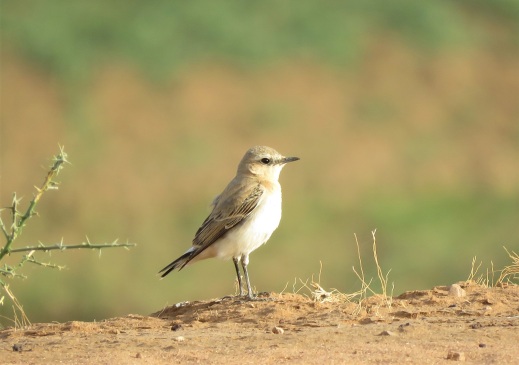
Just like last year we’re bringing our readers a summary of the past year, reviewing some of the ornithological highlights and discoveries made in Senegal, and recycling some of the pictures and posts that appeared on this website during the past 12 months.
2018 certainly has been a busy year!
We’ll start with the best of all: the discovery of what appears to be an isolated (?) population of Horus Swifts (Martinet horus), some 3,000 km from the nearest known breeding sites and more than 1,600 km from the nearest observations of the species (in northern Ghana). This is probably one of the least expected range extensions uncovered in West Africa in recent years, and something we’re of course quite excited (and rather proud!) of. We found these birds during an epic 4-day trip up north together with Frédéric Bacuez and visiting birder Filip Verroens from Belgium, in early January. Needless to say, the year started off with a bang! Read up the full story here and on Frédéric’s Ornithondar blog (in French). A few of these neat swifts were seen again in February by Frédéric and Daniel Nussbaumer, then in October by Vieux Ngom and myself when some 50 birds were present, again showing signs of local breeding and confirming that these birds are most likely residents here, and just last week a group of visiting American birders saw about 25 birds at Gamadji Sare.
Just a few days earlier, in fact on the first day of the year, we’d already found another species new to Senegal: a Meadow Pipit (Pipit farlouse) at the Yene-Tode lagoon just south of Dakar. This find was a bit more controversial – but probably more expected than those swifts! – in the sense that the pipit shows a fairly unusual plumage for Meadow Pipit and certain characters fit Red-throated Pipit better. However, the unstreaked rump and especially the diagnostic call, which was heard loud & clear several times at close range (but unfortunately not sound-recorded), safely rule out Red-throated Pipit, several of which were present in the area at the same time. Full story, description and many pictures here.
Continuing on the same theme, this past year saw the addition of two more species to the Senegal list: Brown-backed Honeybird – which had already been reported from Wassadou in 2015 but was not documented – and Turati’s Boubou. The former was found by Gabriel Caucanas and friends first at Dindefelo, then at Wassadou and later in the Niokolo-Koba NP (more info here), the latter by resident Casamance birder Bruno Bargain back in October. Both were more or less to be expected and back in July we’d actually predicted that the boubou would be found in Casamance some time soon, given that it is known to occur just across the border in Guinea-Bissau. We’ll write up more about this species in due course, and I hope to soon visit the Ziguinchor area again and see (and record) this little-known species – stay tuned!
With no less than four new species, 2018 definitely boosted the national list which now stands at a respectable 678 species; more on this in a blog piece we wrote on the topic of the national list, which contains a link to a handy spreadsheet with all species seen in Senegal, with English, French and scientific names.
Of course there were also the usual lot of vagrants, mostly Nearctic waders in the Dakar region and especially at Technopole, pretty much as usual!
- Common Shelduck (Tadorne de Belon): eight in the Djoudj NP on 17/1 were likely the same group as seen in the Diawling just across the border in Mauritania on 30/12, while one at Technopole on 18-19/2/18 confirmed the small influx that occurred during the ‘17/’18 winter: 8th and 9th records!
- Red-footed Booby (Fou à pieds rouges): one was photographed at Iles de la Madeleine on 26/1 but was only identified later on, while at Ngor up to two adults were seen on several occasions in spring (17/5-22/5, and again on 11 and 22/6) and one was seen twice in autumn (13 & 15/11). These are the 2nd to 4th records for this tropical seabird, which was seen for the first time in October 2016 only.
- Cinereous (=Black) Vulture (Vautour moine): an imm. west of Fatick on 30/1 and one (different bird) on 26/2 near Sagata, east of Kebemer. These observations coincide with the first records for The Gambia (Feb. ‘18) and Mauritania (Dec. ‘17). We also reported the first record of the species, which had not yet been published so far – more details on the status of this increasing Palearctic vagrant in this piece.
- American Golden Plover (Pluvier bronzé): one at Technopole on 8 April, followed by two autumn birds, at lac Mbeubeusse on 3/11 and barely a week later a different bird at Pointe Sarene near Nianing on 9-10/11. Read more on this species in Senegal here.
- European Golden Plover (Pluvier doré): one at Île de Saloulou (Basse Casamance) on 3/1.
- Lesser Yellowlegs (Chevalier à pattes jaunes): the 8th record was one at Technopole seen by a visiting birder on 8/2 and relocated on 19/2
- Baird’s Sandpiper (Bécasseau de Baird): the second for Senegal (and first properly documented) was found at Technopole on 25/3 and seen again on 8/4.
- Buff-breasted Sandpiper (Bécasseau rousset): two birds stayed for a remarkably long time at Technopole, being present from 13/1 (at least one) up to 19/2 at least, then again on 25/3 though this was probably a new bird given that regular visits earlier in the month failed to relocate the two long-stayers; these are the 8th and 9th records.
- Red-necked Phalarope: (Phalarope à bec étroit): one at Djoudj on 27/2 is the 6th record at least, though it’s quite possible that the species is a more regular visitor than the handful of confirmed records suggest.
- Franklin’s Gull (Mouette de Franklin): one was seen five times between 20/5 and 20/9 at Technopole; we summarised the status and trends of the species in this post.
As usual there are also several African vagrants to be reported, such as Lesser Jacana (Jacana nain) seen on 31/1 and 17/2 (three birds!) at Médina Afia near Manda, Kolda dept., and at Ross Bethio on 15/7 – there are only a handful of previous records, including just one in the north (more on status of this species in this post by Ornithondar). A Pharaoh (= Desert) Eagle-Owl (Grand-duc ascalaphe) filmed at Richard Toll on 20/1 was the third record. Six Senegal Lapwings were found at Kamobeul (Ziguinchor) on 30/9 – apparently the first record in 38 years! Three other species with uncertain status in Senegal – true vagrants or scarce but regular visitors? – were seen in the Niokolo-Koba area: Mottled Swift in February and June; a Forbes’s Plover in June and an Ayres’s Hawk-Eagle on 6/3 (Martinet marbré, Pluvier de Forbes et Aigle d’Ayres) .
A special mention goes to the Kordofan Lark (Alouette du Kordofan) that was photographed at Richard Toll on 1/3 by a group of lucky Belgian birders; this is the first record in several years, and the first pictures to be made available online for this species, prompting us to discuss ID criteria and status in Senegal of this enigmatic Sahel special, see this blog piece co-authored with Simon Cavaillès – by far the most read article on the blog, with more than 500 views since its publication in April.
Several winter visitors were seen in higher than usual numbers or reached areas further south than their usual wintering grounds, such as Short-eared Owl (Hibou des marais; seen in six locations during January-March including a group wintering at Technopole, following the influx in Nov.-Dec.). Other scarce winter visitors included a Little Gull (Mouette pygmée) at Ngor on 12/1, while a group of five Cream-coloured Coursers (Courvite isabelle) near Maleme Hodar (Kaffrine) on 1/3 were possibly the southernmost record ever. Other examples include a Spectacled Warbler (Fauvette à lunettes) near Kaolack on 3/3, a “Desert” Grey Shrike (now surprisingly lumped again with Great rather than Southern Grey Shrike; Pie-grièche grise) in the Boundou reserve on 15/3, and five House Buntings (Bruant du Sahara) at Richard Toll on 1/3.
As usual, a few birds were spotted outside of their regular range in the country: several Pallid Herons on the Cap-Vert peninsula; an African Hawk-Eagle that gave us a bit of an ID challenge at Popenguine (3/11); a Greyish Eagle-Owl photographed at Trois-Marigots on 10/1 (only a couple of previous records from N Senegal, see story on Ornithondar); a Grey Phalarope on 25/2 at Médina Afia (a rare inland record!); a singing Klaas’s Cuckoo near Dagana on 6/10; a Broad-billed Roller at Bango (Saint-Louis) on 31/8; Grey-rumped Swallow at Technopole (7/7); an early Lesser Whitethroat at lake Tanma on 25/9; a Cricket Warbler near Gueuol (north of Kébémer) on 21/11 (Aigle fascié, Grand-duc du Sahel, Phalarope à bec large, Coucou de Klaas, Rolle violet, Hirondelle à croupion gris, Fauvette babillarde, Prinia à front écailleux). In the Djoudj, a Brown Snake-Eagle was reported on 5/12. Familiar Chat and Green Turaco were reported from the Niokolo-Koba NP for the first time, where further observations of Mali Firefinch were made (Traquet familier, Turaco vert, Amarante du Koulikoro). Several species were found for the first time in Casamance, including Glossy Ibis, Singing Bushlark, Plain Martin, Great Reed Warbler – details will follow shortly on this website (Ibis falcinelle, Alouette chanteuse, Hirondelle paludicole, Rousserolle turdoïde). Away from the better known wintering grounds in the north of the country, an Iberian Chiffchaff (Pouillot ibérique) was singing at Wassadou on 25/2, and the Technopole bird found on 31/12/17 continued its presence until 7/1 at least.
New breeding records include what appears to be the first confirmed breeding for the Dakar region of Little Tern in June at Lac Rose with at least 14 nests; in the same location we found a nest of Plain-backed Pipit, while a Quailfinch at lac Mbeubeusse on 18/11 suggests that the species may be breeding in the niayes region (Sterne naine, Pipit à dos uni, Astrild-caille). Successful breeding of White-backed Night-Herons (Bihoreau à dos blanc) was confirmed in two locations in Casamance and breeding is also likely along the Gambia river at Wassadou where Pel’s Fishing Owl (Chouette-pêcheuse de Pel) must also have bred. Black-winged Stilts (Echasse blanche) bred once again at Technopole where low water levels created decent conditions in April-June. And a nice breeding record was that of a female Standard-winged Nightjar found incubating two eggs at Pointe Sarène on 4/8 (Engoulevent à balanciers).
A few unseasonal visitors were noted, e.g. early Marbled Ducks and a Black-necked Grebe near Djoudj on Oct. 6th, Western Olivaceous and Melodious Warblers as well as a Woodchat Shrike and even two European Bee-eaters in June; an adult Sabine’s Gull at Ngor on 30/7 (first July record it seems?), and summer Yellow-legged Gulls at Lac Rose (Sarcelle marbrée, Grèbe à cou noir, Hypolaïs obscure et polyglotte, Pie-grièche à tête rousse, Guêpier d’Europe, Mouette de Sabine, Goéland leucophée). Up north, a White-throated Bee-eater and a Pygmy Sunbird were photographed in January near Saint-Louis (Guêpier à gorge blanche, Souïmanga pygmée).
We also continued our seabird migration monitoring efforts during 2018, both in spring and in autumn. Spring migration was summarised in two posts (covering April and May) but the autumn totals are yet to be published. Highlights included decent numbers of Long-tailed Skua (500!) and Grey Phalaropes (1,256!) seen in August when fairly strong north-westerlies created ideal conditions to see these highly pelagic migrants from the coast; both species saw new day records for West Africa it seems. Other good ones included at least 19 Barolo/Boyd’s Shearwaters in Aug.-Sept., a Sooty Tern on 17/9 and several Bridled Terns, while Great Shearwaters passed through in modest numbers around mid-November (Puffin de Barolo/Macaronésie, Sterne fuligineuse, Sterne bridée, Puffin majeur). A pelagic trip on October 1st yielded reasonable numbers of Wilson’s Storm-Petrels (Océanite de Wilson), some shearwaters and skuas, but no rarities this time round. A visiting birder was lucky to see a White-faced Storm Petrel on 3/12 at Iles de la Madeleine, while an observation of Band-rumped Storm Petrel was reported far offshore off Saint-Louis on 25/9 (Océanites frégate et de Castro).
On the ring recovery front, we managed to read some 100 colour rings, mainly of Audouin’s and Slender-billed Gulls (41 & 19, resp.) but also several Greater Flamingos from Spain, a Common Ringed Plover from Portugal, and the first mentions of Avocet in our database (two birds from Spain) as well as a French Mediterranean Gull (“RV2L”) which appears to be the first recovery of this species from Senegal (Goélands d’Audouin et railleur, Flamant rose, Grand Gravelot, Avocette, Mouette mélanocéphale). I now have some 420 ring recoveries in my little database: maybe this year I’ll find time to write up some of the key findings.
A few blog posts on birding sites and other topics were published in 2018, namely the following:
- Senegal as a destination for birders, written up by Paul Robinson following his visit to the UK Bird Fair in 2017
- Blog posts on the birds of Dindefelo and Wassadou following visits to these two major birding hotspots in the south-east of the country
- The Casamance Bird Atlas by the association APALIS
- Birding the Niokolo-Koba: guest blog by John Rose and Dimitri Dagone
- The formal protection of Technopole back in October was of course a major event
- A xeno-canto audio guide to the birds of Senegal
- Last but certainly not least, the last blog piece of the year covered the description of a new species of Square-tailed Drongo
We’ve also been pretty active writing up more formal pieces on birds in Senegal, with several articles published in 2018. This post is actually getting a bit too long so I’ll write about these recent publications in a forthcoming article. For now, go out birding!
Finally, thanks to all our readers for their support and encouragement throughout the year, which has seen a further increase in number of page views (almost 25,000) and website visitors. Oh and do let me know if I forgot anything in the above review, which is just an informal overview – nothing official here!
6 responses to “Year in review: 2018”
Trackbacks / Pingbacks
- - December 2, 2020

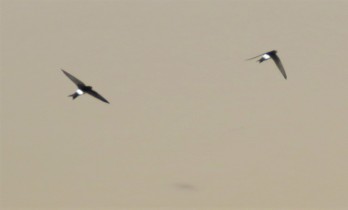
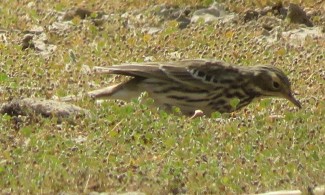
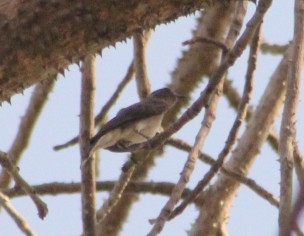






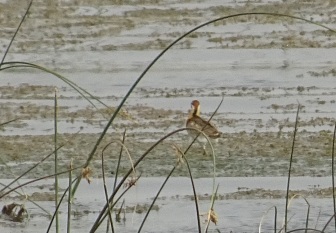
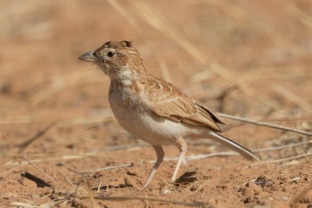
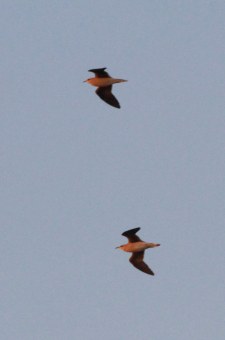
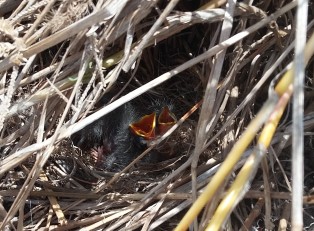
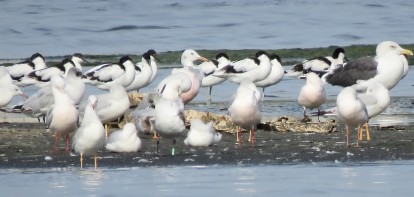


































































































































































































Waow! Beau travail!
Cher Bram, Bravo pour tous tes efforts pour une meilleure connaissance de l’avifaune du Sénégal. Belles observations aussi en 2019 ! Paul Isenmann.
Merci beaucoup Paul pour cet encouragement! Belles observations en 2019 également – bram
HI Bram – Just writing to say Happy New Year. The global birding community, and especially birds and birders in Senegal, owe you a debt of gratitude in keeping up these informative and interesting posts. It’s quite a resources. Birders visiting Senegal will now have something as reference.
Kind regards,
David
Thanks a lot David! Hope to see you again in Senegal this year. Best wishes – bram